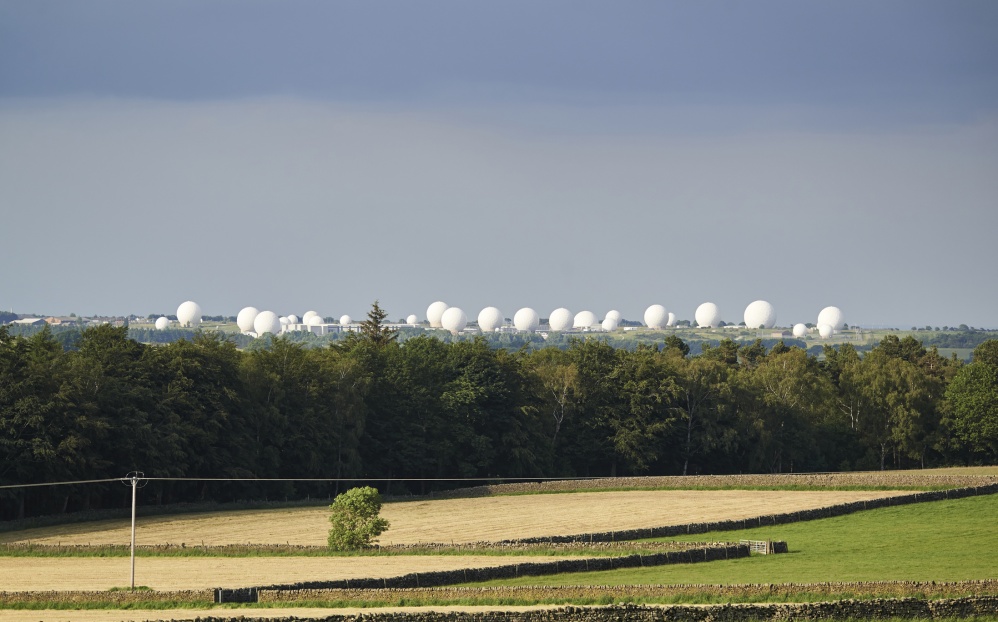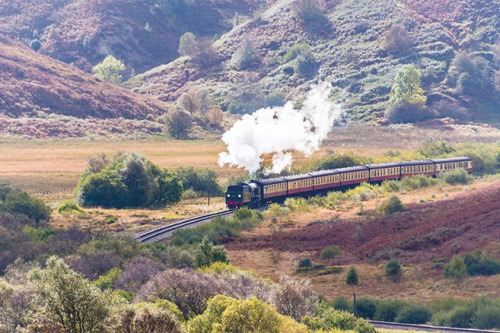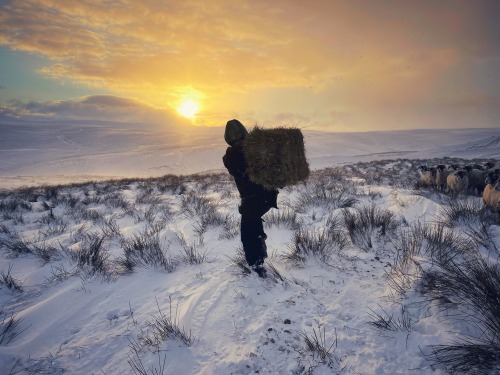What Happens in RAF Fylingdales in the North Yorkshire Moors

The staff at RAF Fylingdales have been watching our skies for over 50 years, originally from inside giant 'golf balls' and now from a giant 'pyramid' in the middle of the North York Moors. But what exactly goes on inside it? Living North paid a visit
Surrounded by miles of heather and open moorland, the structure seems slightly incongruous, but the location is one of the only places in the UK that the radar can function without being affected by interfering radio transmissions. It’s very isolated. Driving up to the station, the signal on my phone predictably vanishes.
Like most military bases, RAF Fylingdales has a high level of security, and I have to be let through a patrolled gate before making my way inside. The first person I meet is Flight Lieutenant Richard Weeks. We set off straight away towards the enormous pyramid (which is how staff refer to the huge radar structure), where about 380 people work, 84 of whom are RAF personnel.
The pyramid is the station’s latest and most powerful radar. Constructed in 1994, it replaced three 84-foot ‘golf balls’, built in the 1960s, which have since been dismantled. The base was initially designed to provide security and protection against potential nuclear attacks during the Cold War, and it is now known as the ‘eyes and ears’ of Northern Europe, with its main purpose being to provide early warning of incoming ballistic missiles. However, its role has been extended with a second objective: space surveillance.
‘We have tracked a spanner that an astronaut dropped,’ explains Squadron Leader Andy Smith, Officer in Charge of Operations at Fylingdales. ‘There’s also a glove up there that somehow ended up being detached, and most of the other stuff is random manmade debris.’ This can be anything from bits of solar panel that have broken up to satellites that are no longer in use, but the station knows exactly where each individual item is. ‘We can track hundreds of objects simultaneously. We have the ability to see up to 3000 nautical miles and we can track objects that are as small as 10cm squared, so to put that into context it’s about the size of a tennis ball.’
‘The radar is very clever,’ continues Andy. ‘It looks at whether an object is something that is going to hit the Earth, in which case we would report it as a ballistic object, like a missile. If it's going around you it's a satellite or a bit of debris, which will go on a completely different logic path.’
To an outsider the tracking system is mind-boggling. The 40-metre high pyramid can see in all directions, thanks to the 2,560 antennae on each face which require an enormous amount of electricity.
‘We have a massive power station which generates our own power,’ explains Richard, ‘Which is critical to the mission because without the power the radar doesn’t work.’
The team in the operations room can monitor exactly what is going on everywhere as each antenna beams energy into space, which alerts the station within milliseconds if something is detected. They can then track where the object has come from, where it is going to, if it deviates from its predicted path and, most importantly, where it will land.
I am escorted into the pyramid by Richard to meet Flight Lieutenant Martin Smith, the Officer in Charge of Mission Control Flight at Fylingdales. However, getting to Martin is no easy feat. Inside the radar is a maze and we must pass through a further series of security doors before arriving at Space Control. Small groups of airmen walk around, and as they pass, snatches of their conversation echo in the quiet. The building feels full of activity but is much quieter than I expected – the whirs and beeps all take place behind firmly closed doors.
Flight Lieutenant Martin Smith has been based at Fylingdales for two years and in that time has been running the operations room, managing the radar and tracking satellites. His background is in air traffic control, which he will be returning to next year, but for the moment, he is heavily involved with the evaluations side of the radar. ‘We evaluate the whole of the unit,’ says Martin. ‘Our mission is to make sure that the operations room is functioning correctly, because if a missile or a rocket goes up or something happens to a satellite we need to be able to deal with that fairly quickly.’
This is crucial to the station. There is no time for hesitation if a missile is launched – they have just 60 seconds to check all the information and systems are correct before alerting the higher authorities to what is happening. Last year a piece of debris from a 1980s rocket re-entered the atmosphere unexpectedly and Martin was part of the team who had to track its position. ‘If you imagine a big piece of metal the size of a car door flying through the atmosphere at several thousand miles an hour, when that hits the Earth, if it’s still intact, it’s going to cause a lot of damage.
‘We roughly knew the path of this piece of debris but we didn’t exactly know the timing as to exactly when or where it might strike. Warnings had to be put out to the Government because they have certain plans in place for how to deal with the impact of such an object if it were to land in a major populated area. That’s when the radar here becomes all of a sudden fundamentally important.’
The object was tracked and went on to land safely in the Atlantic Ocean, but for Martin it’s just one example of why Fylingdales must monitor space so closely. ‘It’s important that we keep a certain number of people at the cutting edge of space stuff so we can be involved if we need to be. We are never going to be rich enough to compete with America and China, but if we can keep specialists here we can still maintain a niche market in space.’
We make our way back out of the pyramid, passing staff who are making their way back from the mess. As I drive away I can’t help but look above me. I imagine the thousands of pieces of space debris in orbit around the planet, all being tracked by this pyramid, here in Yorkshire.






